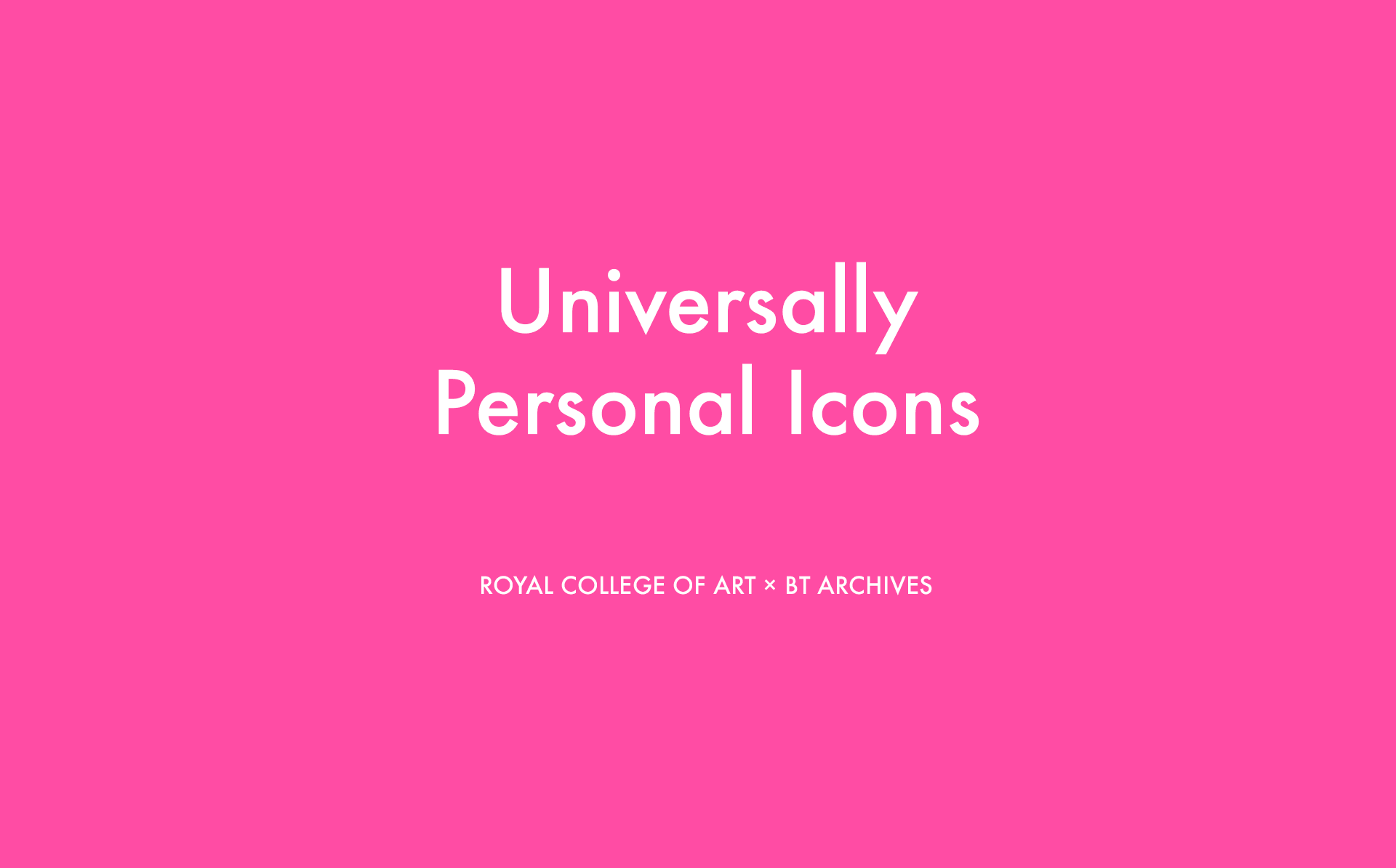Universally Personal Icons
This project was produced in partial fulfilment of MRes Communication Design degree at the Royal College of Art in London, advised by Dr. Emily Candela and Dr. Teal Triggs, in partnership with the BT Archives.
A delayed communication service that records personal icons designed through self-reflexivity, in the era of a pandemic, critically based on the philosophy and universal design of Isotype.
See the project in context: dis-connectfuture.com
Website designed in collaboration with Il Sun Moon and Parinda Sakdanaraseth.
Dis/connect is a collaborative web publication by the MRes Communication Design Pathway at the Royal College of Art, in partnership with the BT Archives. Each piece speculates on the dis/connected future of telecommunications, and each is inspired by an artefact from the archive’s collection. The work was produced during the Covid-19 pandemic.
In the age of the pandemic, many of us are constantly being bombarded with immediate forms of telecommunication that require our attention at all hours of the day. This phenomenon has since been projected as the “new normal”. As a result, the blurring of boundaries between work and personal life is increasingly taking its toll on our mental health.
Inspired by the Telemessage–How It Works poster, this speculative piece of design works as a service, but instead of sending a Telemessage to someone else, it allows you to send a message to yourself. The message lets you record your current experience – it’s then sent away, and after a few years’ time you’ll receive it back. It’s useful to have a delay as the experiences may not seem meaningful now, however, in hindsight they become more precious.
Your experiences and thoughts are depicted as personal icons, inspired by the universal design of Isotype. By offering the opportunity for a pause to reflect, and create a future memory of this era, the service aims to provide relief in this extraordinary situation.
Examples of icons designed through self-reflexivity:
Designing these icons is a way for you to capture the daily aspects of life, however minute the details may be. By transforming the rich imagery into simple icons, we are able to effectively record these times in the form of visual diaries for future remembrance.
Try it yourself!
Featured in a Royal College of Art article:
By Jessie Bond • 1 June 2020
“Visiting the BT Archives has broadened Melissa Lu’s perspective on everyday technologies. She explained: ‘To see the amount of research, documentation, and design that goes into things we take for granted, like fibre cables and telephone poles, has been inspiring towards the work we are doing in the Book Test Unit.’ For the project, Melissa has developed a visual language for recording experiences of the pandemic for electronic transmission to readers in the future, based on the design of a “telemessaging” system in the BT Archives.
The students have had to adapt their ideas to work for an online format during lockdown, with plans for a DIY physical second edition set for when the group can physically be reunited in the future . Melissa, who has contributed towards the design of the publication, outlined this process: ‘through edits and discussions with fellow peers and tutors, we decided to focus on depicting the publication as a website, incorporating the traditional elements of a book into the new medium. This opens up the possibility of video and sound pieces to be presented more fully.’”





